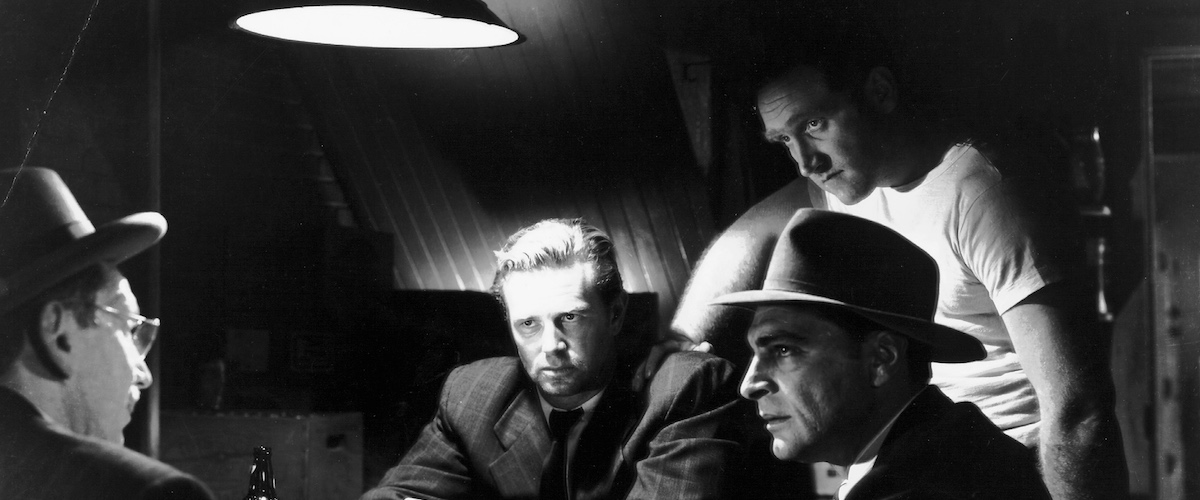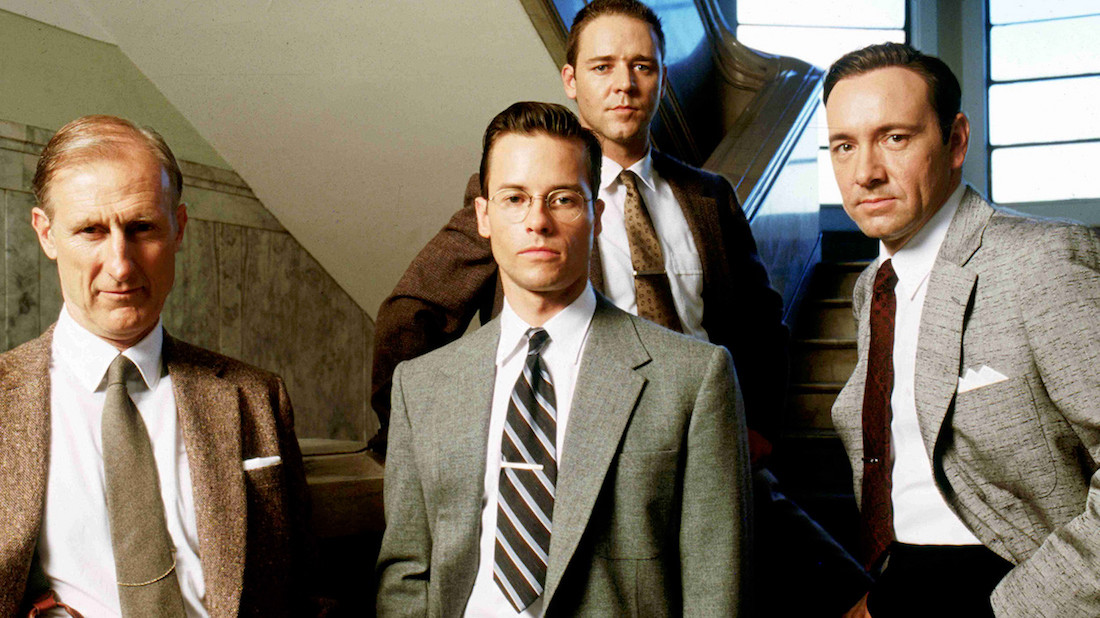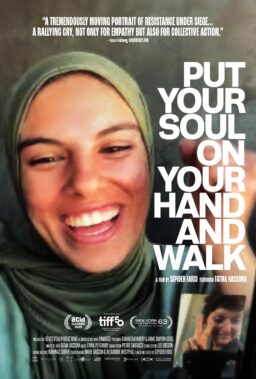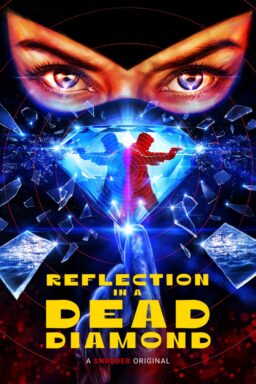For its ninth edition, Noir City: Chicago returns with what its programmers have dubbed “The Big Knockover”—a celebration of the heist film, from its heyday in the ’40 and ’50s, to its modern-day incarnations. As usual, the scene of the crime is the Music Box Theatre, which will screen 18 titles, all in 35mm, from Friday, August 25 to August 31.
“It’s a great lineup of classics and forgotten titles,” said Eddie Muller, founder and president of the San Francisco-based Film Noir Foundation, which presents the annual touring festival. For past editions, Noir City has extended its focus to international noir and even noir in color. But it rarely has strayed beyond the golden age of noir. “The Big Knockover,” however, offers several heist classics from the ’70s and later.
“It’s funny when I mapped this out, it wasn’t heavy on the ’70s,” Muller said. “When we did this lineup earlier this year in San Francisco, it was a traditional lineup of noir eras.” However, several films shown in San Francisco had already been programmed for previous Noir City: Chicago lineups. So after those films were dropped for the Music Box run, “what we ended up with was a disproportional emphasis on the ’70s.”
Muller’s original intention was to show the evolution of the heist film and its connection to film noir: “We’re interested in people debating what is film noir. If you just draw from just the classic noir era, the movies start to seem really similar, and I thought we couldn’t get a week of double bills out of that.”
Noir purists don’t need to be alarmed, however. “This doesn’t mean we’re doing something else and changing the festival’s focus,” Muller said. “We’re just coloring outside the lines for a week. This year’s focus on hold-ups and heists gives us the opportunity to venture beyond the 1940s and ’50s to show how noir has expanded and evolved over time.”
Known throughout the film world as “The Czar of Noir,” Muller will appear at the Music Box during the opening weekend (August 25-27) to introduce films and serve as host. His noir empire expanded this year to Turner Classic Movies, where he hosts the weekly “Noir Alley” showcase on the cable channel. (It returns September 3 with “Framed” [1947].) TCM’s “Noir Alley” also is sponsoring this year’s Noir City festival.
Taking over as host for the August 28-31 dates is Alan K. Rode, a director and treasurer of the Film Noir Foundation, film scholar and curator (he produces the annual Arthur Lyons Film Noir Festival in Palm Springs, Calif.). His latest book, Michael Curtiz: A Life in Film, the first-ever biography of the Oscar-winning director, will be published in November by the University of Kentucky Press.
Noir City: Chicago opens with a 20th-anniversary screening of Curtis Hanson‘s “L.A. Confidential,” a chronicle of political and police corruption as four detectives try to solve “The Nite Owl Massacre.” Author James Ellroy, who wrote the film’s source novel, will join Muller onstage to discuss the movie and its legacy. “The Music Box really wanted to celebrate 20th anniversary of ‘L.A. Confidential’ and salute Curtis Hanson [who died last year],” Muller said. “It’s the only Noir City festival this year that’s screening this film.”
As usual, there’s something for everyone, from noir novices to hardcore fans. “We always try to find things that have slipped through the cracks,” Muller said. “But it’s wise to book stuff like ‘The Asphalt Jungle.’ It might be the last chance to see these classics on a big screen. That’s why we book classics every five years or so. It’s a cycle. Trust me, there a lot of people who have never seen this movie on the big screen or not at all. It’s also important to see these films in a theater. We need to convince studios there’s a reason to keep these movies in condition for showing them in theaters, as they were originally intended.”
Here’s the lineup for the Music Box event, with comments from Muller and Rode:
FRIDAY, August 25
“L.A. Confidential” (1997), 7:00 p.m.: Though it’s not a heist film or even a true neo-noir, it taps into the spirit of the genre, according to Muller and Rode. “It conjures a fictional saga of the city’s shadowy history that might someday be taken for fact,” Muller said. “By far, it’s the best cinematic adaptation of an Ellroy novel. A worthy successor to ‘Chinatown’ with its crafty blending of facts and fantasy, ‘L.A. Confidential’ has gotten even better with age.”
“Dragnet” (1954), Aug. 25, 10:00 p.m.: The feature-film version of Jack Webb’s seminal TV series strongly affected a young James Elloy, who later credited it with influencing his writing style. “The movie is a time capsule of the mid-’50s,” Rode said. “A lot of sociopolitical attitudes in America were foisted upon the public by ‘Dragnet.’ This was the legacy of Los Angeles, a wide-open, corrupt town; when William Parker took over as police chief, he got rid of a lot of the corruption, save for the bigotry and such. ‘Dragnet’ is a microcosm of America in the ’50s.”

SATURDAY, August 26
“Kansas City Confidential” (1952), 2:30 p.m.: After an armored-car robbery, a World War II veteran (John Payne) turns patsy in director Phil Karlson’s classic. “Kansas City Confidential” has circulated in public-domain versions for years, but the Noir City team secured “a really good print” from the British distributor Park Circus. “It’s the prototypical heist film, and yet it’s so noir,” Muller said. “Plus, it’s Phil Karson, what’s not to like?”
“Drive a Crooked Road” (1954), 4:45 p.m.: Love compels a mechanic to take the wheel for a gang of bank robbers in this underappreciated thriller directed by Richard Quine (“Pushover”) and written by Blake Edwards (before his “Pink Panther” fame). “It’s Mickey Rooney noir!” Muller said. “He’s the little man who falls hard for a femme fatale, then he gets used.” Rode singles out the role as one of the best ever for the Mick, who often didn’t get much critical respect for his acting. “It’s so unlike his MGM stuff,” he said. “It’s a sad, wonderfully crafted performance by Rooney.”
“Classe Tous Risque” (1960), 7:00 p.m.: A gangster (Lino Ventura) plans one just job before he goes straight in Claude Sautet’s thriller, based on a novel by Death Row convict-turned-author José Giovanni. “I love films like this where the director goes on to have an entirely different career,” Muller said. “Sautet made films about relationships and studies of manners. The way he humanizes these characters is remarkable. José Giovanni, one of the more interesting figures in French cinema, was imprisoned for murder, but there was great debate about his guilt. His insight into the criminal mind was extraordinary. Whatever he was guilty of, he paid for it.”
“The Aura” (2005), 9:15 p.m.: An epileptic taxidermist (Ricardo Darin) daydreams about pulling off the perfect crime, then accidentally kills a casino robber and steps into the dead man’s life of crime. It’s the second and last film from Argentine director Fabián Bienlinsky (“Nine Queens”), who died of a heart attack in 2006. “‘The Aura’ is not a heist film it’s a con film, but it makes ‘The Sting’ look like a short subject,” Rode said. “At the end, you’ll go, wow, it’s the ultimate in con films.”

SUNDAY, August 27
“High Sierra” (1941), 2:30 p.m.: As Mad Dog Earle, planning one last heist for sentimental reasons, Humphrey Bogart scored his break-out role. “It’s really stunning how good [director Raoul] Walsh was in action films,” Rode said. “It’s Bogart’s picture but Ida Lupino got top billing, because she was the bigger draw at this point. Bogie thought if you show up and do good work and keep working, something will finally happen. With ‘High Sierra,’ he finally broke loose from his heavy roles and never looked back.”
“Plunder Road” (1957), 4:45 p.m.: In this little-known noir directed by Hubert Cornfield, five men, led by Gene Raymond (in a rare villainous turn), try to pull off the perfect heist: stealing $10 million in gold from a train headed for a U.S. Mint branch in San Francisco. Muller notes director Cornfield’s stylistic ties to French auteurs Jean-Luc Godard and Jean-Pierre Melville; in “Plunder Road,” the crime plays out almost silently in the rain, just as Melville would years later in “Un Flic” (1973).
“Plunder Road” features crisp black-and-white cinematography by Ernest Haller, the favorite DP of Bette Davis and Joan Crawford (as FX’s “Feud” reminded viewers earlier this year). Speaking of fabulous femmes, Rode recalls an appearance by “Plunder Road” co-star Jeanne Cooper, a longtime soap-opera staple, at a screening of his Arthur Lyons Film Noir Festival in Palm Springs. “There’s scene in which they have to melt down the gold, which they shot in a foundry on Hill Street in downtown L.A.,” Rode said. “She amazed the audience with her ability to remember details from 50 years ago. ‘Kid, when you do daytime TV,’” she told Rode, “you’d better have a good memory.“
“Thunderbolt & Lightfoot” (1974), 6:30 p.m.: With this road movie/caper drama about two modern-day highwaymen (Clint Eastwood and Jeff Bridges), Michael Cimino auspiciously kick-started his directorial career. Muller programmed this title as a tribute to Cimino, who died last year. “It’s a film a lot of people don’t know about,” he said. After the disastrous “Heaven’s Gate” (1980), “Cimino became such a controversial figure. Besides, it’s fascinating to see how public consciousness puts a timeline on films. Some think ‘Thunderbolt’ is too new to be noir, and yet it came out the same year as ‘Chinatown,’ universally regarded as a neo-noir.”
“Blue Collar” (1978), 9:00 p.m.: Stymied by their dead-end jobs and existence, three Detroit auto workers (Richard Pryor, Harvey Keitel and Yaphet Kotto) decide to rip off their union office. There’s no honor among thieves, as the three quickly find themselves at odds with one another. Muller calls Paul Schrader’s directorial debut “pretty incendiary. It’s every bit as timely today as when it was first released because it deals with issues that are still at the fore of American society.” Calling it “one of great debut films ever,” Muller describes “Blue Collar” as “a baptism by a first-time filmmaker. Imagine trying to direct Richard Pryor”—who reportedly pulled a gun on Schrader, because the comic didn’t like doing multiple takes. “Somehow he got this movie out of a painful cauldron of hostility. It’s dark. The heist thing makes it work as a noir. It’s a masterpiece in many ways.”

MONDAY, August 28
“Cash on Demand” (1961), 5:00 and 9:30 p.m.: “A Christmas Carol” goes noir as a Scrooge-like bank manager (Peter Cushing) finds himself blackmailed into robbing his own bank. “I thought this movie [which played at the Gene Siskel Film Center’s Brit noir series last year] was my rediscovery,” Muller said, laughing. “But in any case, people need to see this movie; it’s fascinating. There are a lot of Cushing fans who have never seen him in a straight dramatic [non-horror] role. André Morell [as the blackmailer] practically steals the whole movie.”
Rode points out that the low-budget title, made for just $130,000 by Britain’s Hammer Films, then known primarily for its horror movies, was shot in 1959 but not released until spring 1962 in certain cities by its U.S. distributor, Columbia Pictures. Then it was shown on a double bill with “Walk on the Wild Side,” Edward Dmytryk’s lesbian-themed melodrama. “‘Cash on Demand’ is effective because of the interplay between Cushing and Morell,” Rode said. ”It shows you how much can be done with a good script and great actors. It’s a very underrated film.”
“Odd Man Out” (1947), 7:00 p.m.: After a botched robbery, Irish nationalist (James Mason) goes on the lam. “I’m eager to see ‘Odd Man Out’ on the big screen, because it’s the first of Carol Reed’s trio of films that made him one of the great Golden Age directors,” Rode said. Though Reed received Oscar nominations for “The Fallen Idol” (1948) and “The Third Man” (1949), other two films in that trio, he finally won best director Oscar honors for the musical “Oliver!” (1968). “When I think of Reed, I don’t think of ‘Oliver!’ “ Rode said. ‘It’s ‘The Third Man’ or ‘Odd Man Out’ all the way.”

TUESDAY, August 29
“The Brink’s Job” (1978), 5:00 and 9:15 p.m.: Based on the famous $2.7 million Boston robbery of 1950, “The Brink’s Job” was disowned by its director, Chicago native William Friedkin, then riding high after career peaks of “The French Connection” (1971) and “The Exorcist” (1973). “I love ‘The Brink’s Job.’ It bothers me to hear William Friedkin dismiss it,” Muller said. “It’s like Hitchcock and ‘The Wrong Man.’ Why would he say something like that? This movie has a tone that people don’t expect from Friedkin. He’s going for something different here. It deserves a critical reassessment because it is so well-made, with one of the best performances ever by Warren Oates.” (35mm)
“Six Bridges to Cross” (1955), 7:15 p.m.: In the first feature-film treatment of the Brink’s robbery, the “Crime of the Century” becomes a character study, with Tony Curtis as the mastermind (here named Jerry Florea). In his film debut, Sal Mineo plays Florea as a young boy, and “his performance is dead on,” Muller said. “Sal is the best thing in the movie. This is an interesting double bill, because it shows us how they had to make the story in ’50s, as opposed to the more permissive ’70s.”

WEDNESDAY, August 30
“Charley Varrick” (1973), 5:00 and 9:30 p.m.: After a small-time criminal (Walter Matthau) knocks off a bank, he realizes that he’s stumbled upon a Mafia-run money-laundering operation and must take evasive action. “Charley Varrick” was helmed by Chicago native Don Siegel, whom Rode regards as one of the most overlooked of post-war directors. “He came out of Warner Bros., where he became the montage guy from 1939-’46; he was a genius at that,” Rode said. “Jack Warner wouldn’t let him direct until ‘The Verdict’ [1946].” In the late ’60s, Siegel partnered with Clint Eastwood and had a creative rebirth. “‘Charley Varrick’ is a really terrific film, stocked with great character actors like Norman Fell, William Schallert and John Vernon.”
“The Taking of Pelham One Two Three” (1974), 7:15 p.m.: In the first and best film version of Peter Godey’s novel of urban paranoia, a gang of colored-coded thieves (led by a malevolent Robert Shaw) hijack a New York subway for a ransom of $1 million. “It’s the quintessential New York City film with New York City actors on New York City locations,” Rode said. “It’s such an incredible document of ’70s New York,” Muller added. “The other movies seem like a product, but the original feels like this organic thing that grew out of New York City at that time. It has that authentic grit.”

THURSDAY, August 31
“The Asphalt Jungle” (1950), 5:00 and 9:00 p.m.: To close out this year’s lineup, the Noir City team programmed what many critics regard as “the mother of all heist movies.” Director John Huston, who also co-wrote the script, assembled a great ensemble cast of Sterling Hayden, Sam Jaffe, Louis Calhern, Marc Lawrence, et al. Muller and Rode agree: “The Asphalt Jungle” is “as close to perfection as any crime film made in the United States, then or now.”
“Quiet, Please: Murder” (1942), 7:15 p.m.: The Noir City team found this little-known thriller, about a murderous book forger propitiously named Fleg (George Sanders) in the Fox vault. “If you’re a George Sanders fan, this will be one of the high points of the festival for you,” Muller said. “It’s one of the best of his top characters. It’s incredible. You will not believe how perverse this movie is. Do not miss it.”
Plus, how many noirs are set in the Los Angeles Public Library? In “Quiet, Please,” Sanders and Gail Patrick are partners in crime, “sizing up how to double-cross the other one,” Rode said. “Sanders proceeds to go off on these Napoleonic riffs, like he’s tuning up to play Addison DeWitt in ‘All About Eve.’”
Tickets are $12, $9 for Music Box members. Festival passes, $85; $70 for Music Box members. For August. 28-31, tickets can be used for a double bill. For more information, click here.











